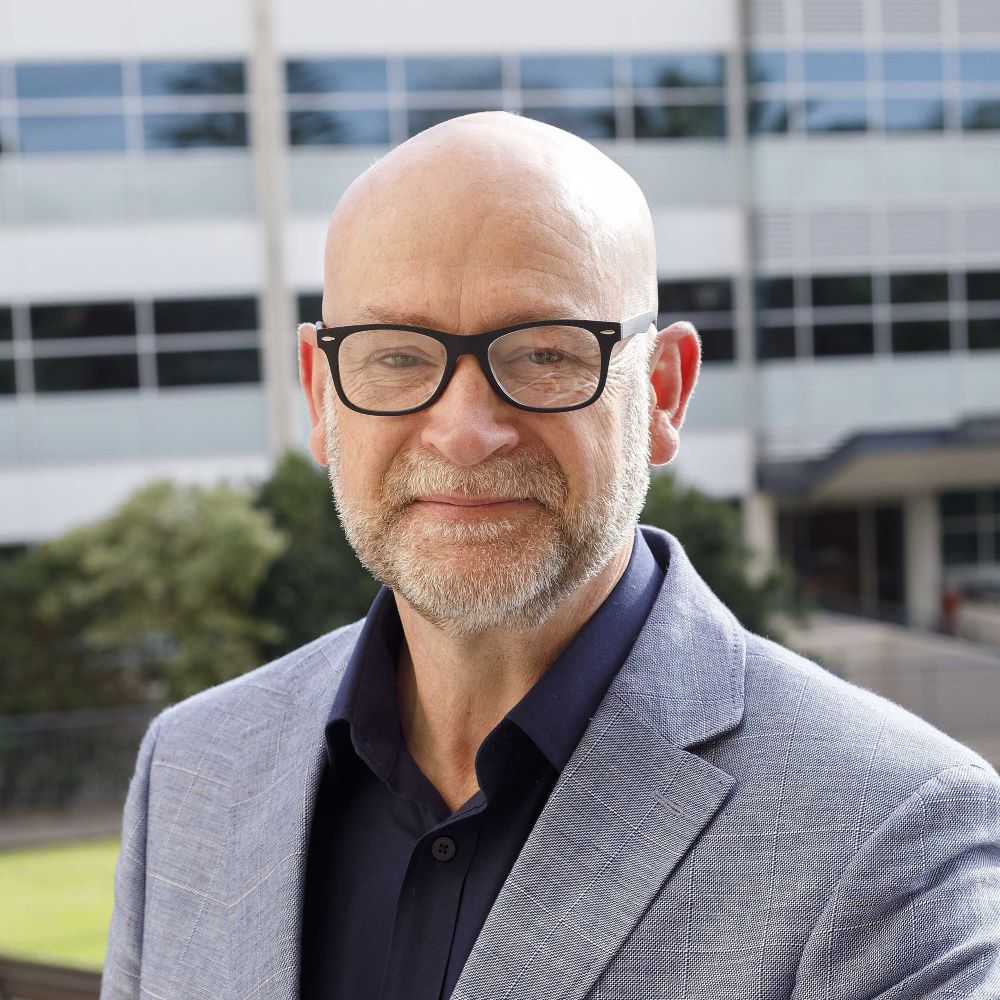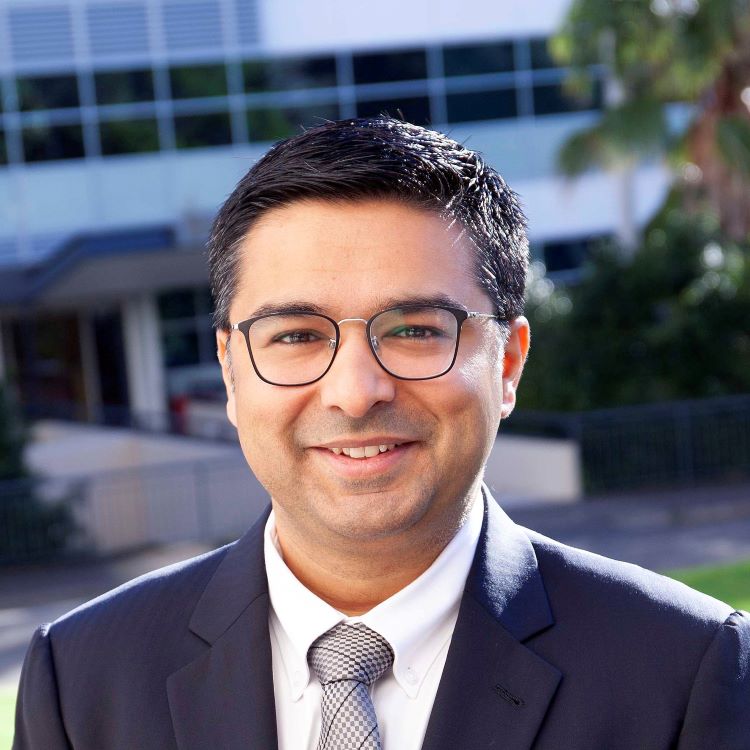
Robotic Inguinal Hernia
Surgery Program
About the program
Inguinal hernia repair is one of the most commonly performed general surgical procedures, with simple procedures often performed as day cases. The gold standard is laparoscopic minimally invasive surgery. The procedure can also be done robotically with equally good results.; however there has been a perception that this is a more expensive, less efficient method. Sydney Adventist Hospital has several of Sydney’s leading robotic general surgeons who perform inguinal hernia surgery both robotically and laparoscopically, and recently completed a Quality Improvement Project aimed at testing this perception.
There are various groups of hernia patients that may be suitable for a robotic surgery approach. Your doctor will discuss with you the best treatment option for you based on your circumstances. Both laparoscopic and robotic surgery have been performed at the San for many years.
Begin your hernia repair journey
1. Speak to your GP![]()
2. Choose a San doctor![]()
3. Make an appointment![]()
 A/Prof Stephen Pillinger
A/Prof Stephen Pillinger
General Surgery, Colorectal Surgery,
Colorectal Robotic Surgery
| EASTWOOD | (02) 9874 5500 |
| ST LEONARDS | (02) 9436 4550 |
| WAHROONGA | (02) 9874 5500 |
 A/Prof Walid Barto
A/Prof Walid Barto
General Surgery, Colorectal Surgery,
Colorectal Robotic Surgery
| WAHROONGA | (02) 4722 8552 |
| KINGSWOOD | (02) 4722 8552 |
 A/Prof Christos Apostolou
A/Prof Christos Apostolou
General Surgery, Gastric & Oesophageal Surgery, Hepatobiliary & Pancreatic Surgery,
Upper GI Robotic Surgery
| WAHROONGA | (02) 9480 4250 |
| FRENCHS FOREST | (02) 9480 4250 |
 Dr Assad Zahid
Dr Assad Zahid
General Surgery, Colorectal Surgery,
Colorectal Robotic Surgery
| WAHROONGA | (02) 4626 6654 |
| LIVERPOOL | (02) 4626 6654 |
| CAMPBELLTOWN | (02) 4626 6654 |
 A/Prof Craig Lynch
A/Prof Craig Lynch
General Surgery, Colorectal Surgery,
Colorectal Robotic Surgery
| WAHROONGA | (02) 9480 6210 |
 Prof Jaswinder Samra
Prof Jaswinder Samra
General Surgery, Hepatobiliary & Pancreatic
Surgery, Upper GI Robotic Surgery
| GREENWICH | (02) 9436 3775 |
| EASTWOOD | (02) 9436 3775 |
This project was reviewed by the AHCL Research Office and approved by the AHCL Director of Research as a QI project in accordance with the NHMRC Ethical Considerations in Quality Assurance and Evaluation Activities (March 2014) and the Health Privacy Principles #10 and 11. No ethical risks were determined with the project.
A hernia forms when part of an organ or tissue protrudes through a weakened area or tear in surrounding tissue or a muscle wall. Hernias can be caused by many different factors, either alone or in combination, such as:
- obesity
- heavy lifting
- pregnancy
- coughing
- genetic predisposition
Recognising hernia symptoms
The displacement of the tissue or organ can result in pain or discomfort and may also result in visible swelling under the skin and digestive issues. The most common types of hernias occur in the groin, around the stomach and in relation to the abdominal wall. The severity of symptoms varies depending on the size and location of the hernia and can be more noticeable during specific activities such as lifting or straining which exert force on the impacted area.
If a hernia is suspected, your doctor will conduct a physical examination to identify the location and severity. This would usually be followed by imaging tests such as ultrasound or CT to confirm the precise location and size to assist with treatment options.
Common hernia symptoms
- Visible bulge, especially when standing or straining
- Local discomfort/aching sensation
- Pain with specific activities
- Tenderness at the location when pressure is applied
- Digestive symptoms
- Change in bowel movements
Hernia treatment
Smaller or minor hernias may be monitored for a period of time while aggravating activities are avoided, to see if symptoms persist. For example, lifestyle changes such as weight loss or avoiding heavy lifting can also help to minimise symptoms and the condition. Support garments can also be used to provide pain relief while the hernia is monitored.
While not all hernias require surgery, this is the most typical outcome for many types of hernias such as abdominal wall hernias. Where hernia repair surgery is recommended, the common approach involves returning the protruding organ back into its proper position and reinforcing the weakened muscle or tear. Untreated hernias can lead to other medical issues so treatment by surgery is commonly recommended.
Once diagnosed, your doctor will discuss the hernia repair treatment options and then refer you to an appropriate hernia repair specialist.
Types of hernia surgery
The team of hernia repair specialists based at the San on Sydney’s North Shore undertake three main types of hernia surgery which each have different applications and considerations:
Open incision
May be preferred for complex hernias or where laparoscopic is not feasible; requires a larger incision than keyhole or robot-assisted and may have longer recover times.
Keyhole (laparoscopic)
Minimally invasive surgery with shorter recover times but may not be suitable for a complex hernia.
Robot-assisted
Minimally invasive surgery conducted with enhanced visualisation and technology; provided at the San with no additional hospital costs for patients than other types of surgery.
As individual needs differ and not all patients are suitable for particular types of hernia surgery, your doctor and hernia repair specialist will assess the best approach for your condition.
Robotic hernia surgery at the San
While the San’s hernia surgery team conduct all types of surgery, they have specific expertise in robotic hernia surgery. Widely used in surgery for more than 20 years, robotic assisted hernia surgery involves the use of a system with mechanical arms which have surgical instruments and cameras attached. With a three-dimensional view and enhanced magnification, the surgeon controls the system via a computer console. Using the robotic surgery approach, patients generally experience fewer complications and faster recovery times. The San is home to some of Sydney’s best hernia surgeons with a well-established robotic surgery centre located at our North Shore hospital.
Why choose the San for your hernia surgery?
As a leading hernia repair hospital with a large number of highly qualified surgeons who specialise in hernia surgery, the San is well-equipped to offer all types of hernia surgery either with or without robotic assistance. In conjunction with your doctor, our specialist team will review and recommend the most suitable approach to your hernia repair, taking into account your individual circumstances.